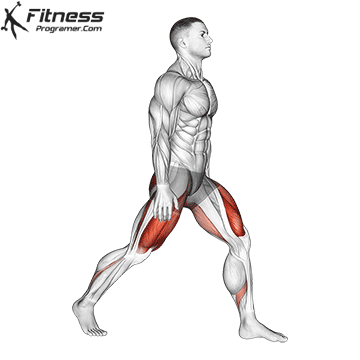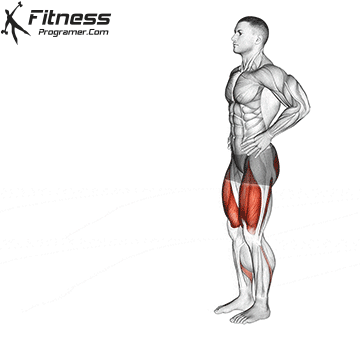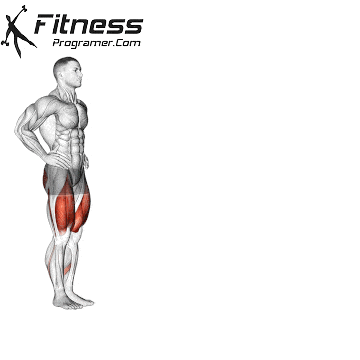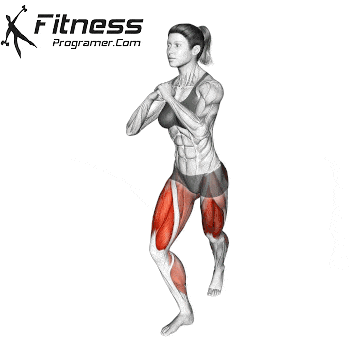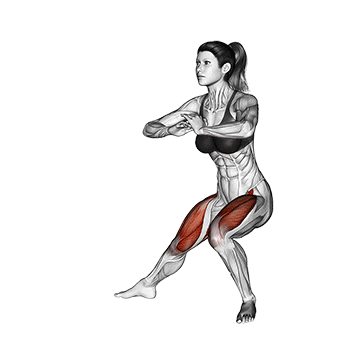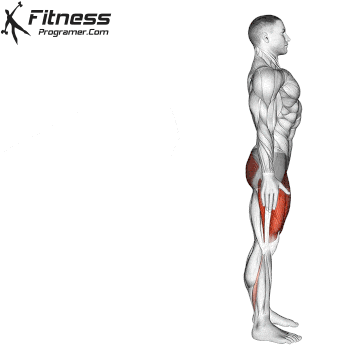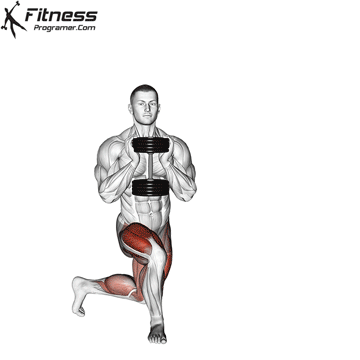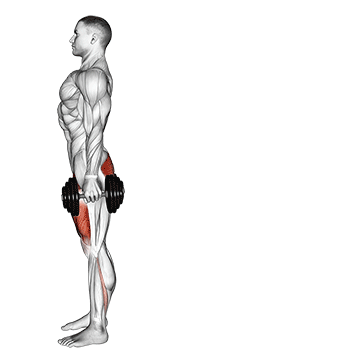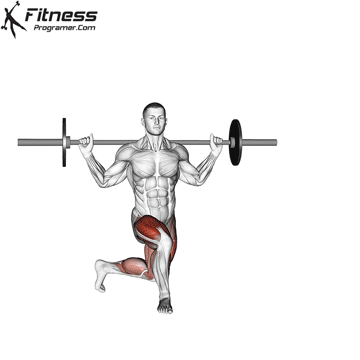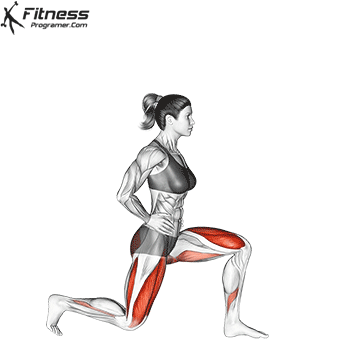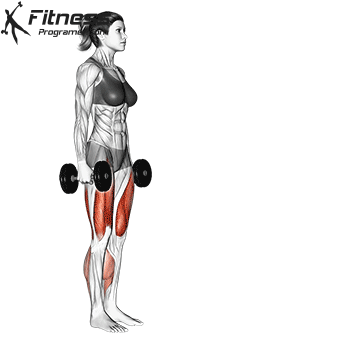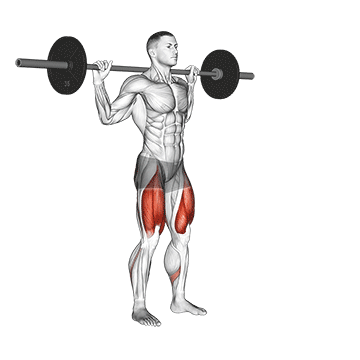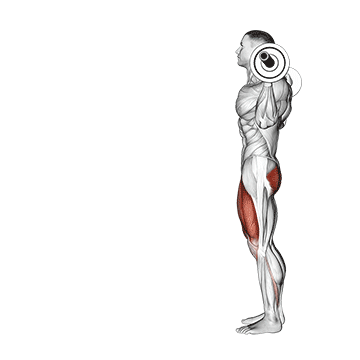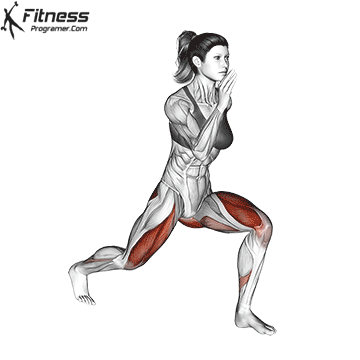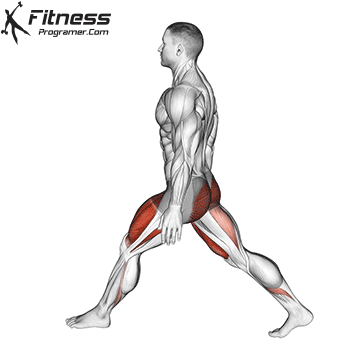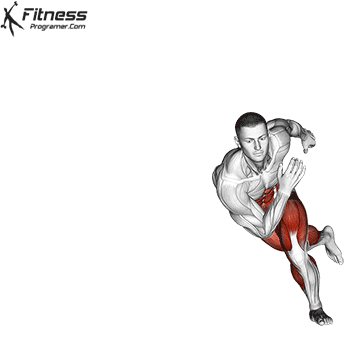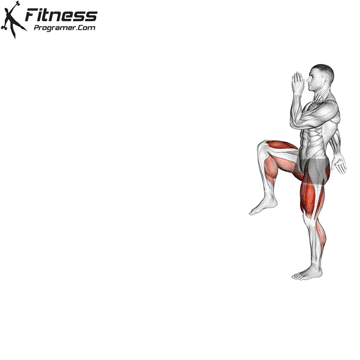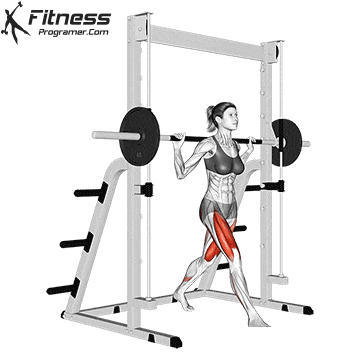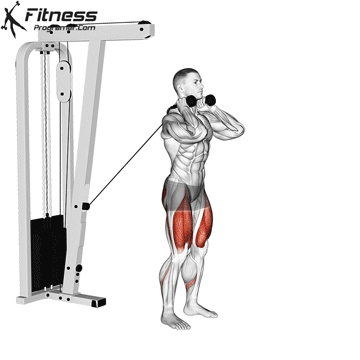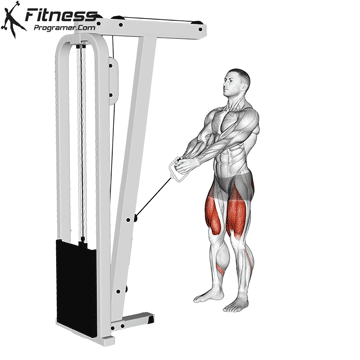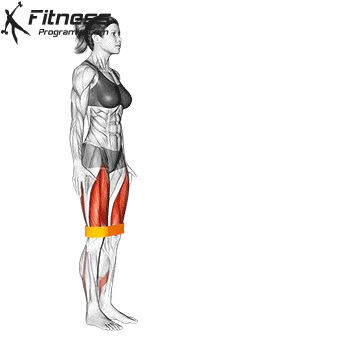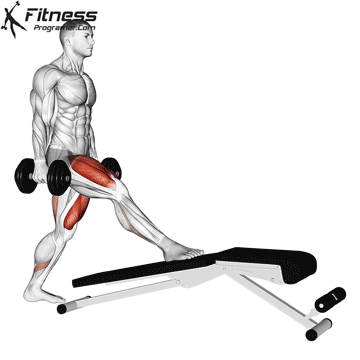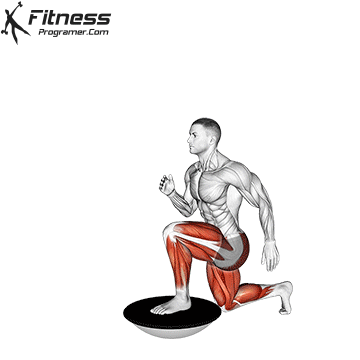Overview
The dumbbell reverse lunge is a powerful lower body exercise that enhances leg strength, core stability, and balance. Unlike forward lunges, this variation places less strain on the knees and emphasizes glute and hamstring activation. It can be scaled for beginners or used in strength and hypertrophy training programs.
How to do perform Dumbbell Reverse Lunge
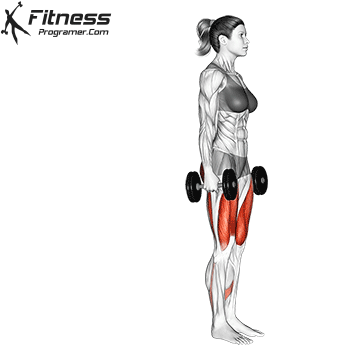
Hold a dumbbell in each hand, arms fully extended at your sides, palms facing inward.
Stand tall with your feet hip-width apart and core engaged.
Step one leg backward and lower your body by bending both knees until your back knee hovers just above the floor.
Keep your torso upright and front heel grounded as you descend.
Push through the front foot to return to the starting position.
Repeat on the opposite leg, alternating or completing all reps on one side.
Tips for Proper Form
Maintain an upright torso to reduce strain on the lower back.
Keep your front knee above the ankle, not past the toes.
Control the descent to protect your knees and activate muscles more effectively.
Engage your core throughout the movement for balance.
Use a smooth and steady pace to avoid unnecessary impact.
Common Mistakes
Letting the front knee drift inward, which stresses the joint.
Leaning forward excessively, reducing glute and hamstring engagement.
Rushing the movement, which compromises form.
Stepping too narrow, leading to instability.
Dropping the back knee too hard, which can cause discomfort or injury.
Benefits of the Dumbbell Reverse Lunge
Improves unilateral leg strength: Each leg works independently to build balanced muscle development.
Enhances glute and hamstring activation: The reverse motion targets posterior chain muscles more effectively than forward lunges.
Reduces knee stress: Reverse lunges place less pressure on the knee joint, making them safer for those with knee issues.
Boosts coordination and balance: The single-leg nature of the movement challenges your stability and neuromuscular control.
Strengthens the core: Holding weights while moving backward requires increased core engagement.
Builds lower body endurance: Performing higher reps with lighter weights improves muscle stamina and cardiovascular fitness.
Excellent for progression: Easily scaled with weight increases or integrated into complex leg day routines.
How to Incorporate Into Your Routine
- For Beginners: Perform 2 to 3 sets of 8 to 10 reps per leg using light dumbbells.
- For Hypertrophy: Use moderate to heavy weights for 3 to 4 sets of 10 to 12 reps.
- For Strength: Train with heavier dumbbells for 4 sets of 6 to 8 controlled reps.
- For Functional Training: Combine with core or balance exercises for athletic performance.
- For Circuit Training: Include in a full-body or lower-body circuit for 30 to 60 seconds per leg.
- For General Fitness: Add to your weekly routine 2 to 3 times to build strength and movement quality.
- For Mobility and Control: Use a slower tempo to enhance control, stability, and range of motion.
Dumbbell Reverse Lunge Muscles Worked
It primarily targets the muscles in the legs, including the quadriceps, hamstrings, and glutes. The muscles worked during static lunges include:
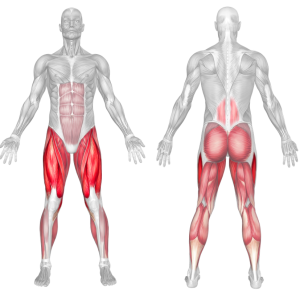
Frequently Asked Questions
Is the dumbbell reverse lunge safe for bad knees?
Yes. Reverse lunges reduce forward knee stress and can be safer than forward lunges when done with good form.
How heavy should the dumbbells be?
Start light to master form, then gradually increase weight as strength improves.
Should I alternate legs or do all reps on one side?
Both are effective. Alternating adds a cardio element, while unilateral reps emphasize strength and control.
Can I do this without weights?
Absolutely. Bodyweight reverse lunges are a great option for beginners or warm-ups.
Dumbbell Reverse Lunge Variations
Dumbbell reverse lunges are versatile and can be modified to suit various fitness levels and goals. Incorporating different lunge variations (see list below) allows you to target different muscles and add variety to your workouts.

